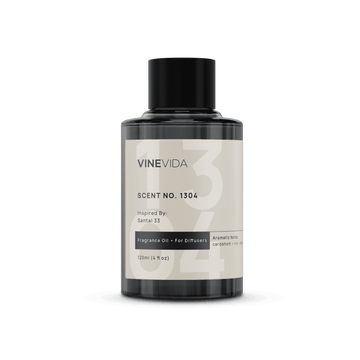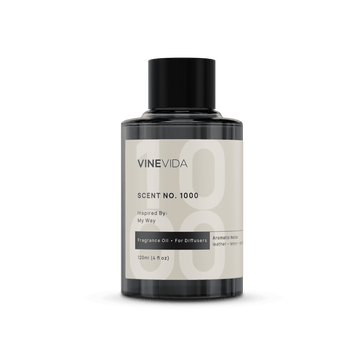Chemically speaking, soaps are actually salts, made from a combination of an oil or fat, and an alkali. The term saponification refers to the process of turning fat into soap and glycerol. Many people have concerns about their soap having lye in it, but this isn’t the case. While lye goes into your soap, after saponification occurs it becomes something molecularly different, meaning the final product does not contain lye! Another term that may come up in soap making recipes is super fatting. This refers to when the soap maker puts extra fat or oil into the soap, and when all the lye has been used up there is still excess fat in the final product, usually for moisturizing purposes. In this article, we look at the key soap making ingredients that you will need to create your own soap!
Soap Making Supplies
There is a fair bit of equipment that you will need along with your soap making ingredients. Thankfully, most of it is easy to come by!
Slow Cooker/Double Boiler
This is what you will actually heat the soap in. For safety reasons, you don’t want to use the same pots you actually cook with. It’s best to have designated equipment for soap making.
Container for Pouring Lye
This needs to be either plastic, glass, or stainless steel. This is because lye can react and eat through aluminum.
Container for Mixing
As above, use a heavy-duty container that does not contain aluminum, as you will need to mix lye in this.
Digital Scale
To accurately measure all of your soap making ingredients.
Silicone Spatula
This should be strictly used for soap making.
Immersion Blender
Having a stick blender among your soap making supplies will make the job much easier for you. You can also use a hand mixer, as long as it is one you use only for making soap. Note that if you are using an immersion blender you should not use a glass container for mixing. This is because the blades are metal, and there is the risk of the glass breaking.
Candy Thermometer
Also known as a sugar thermometer, candy thermometers are cooking thermometers that can read up to 400°F or even higher.
Soap Making Molds
When it comes to molds, you have a large variety to choose from. The most popular option is the silicone mold, as it requires no lining, is easy to clean, and comes in various shapes and sizes. Another option is a wood mold. They can last a long time, but do require the use of freezer paper for lining purposes. For small batches, you can use plastic, though there are extra steps to take to protect your soap while it sets. You can also use recycled items you have around the home for molds, as long as you use the proper lining.
Cutter
There are various different types of soap cutters, in all ranges of budgets. Often, depending on what type of mold you are using it will come with a cutter. There are plenty of soap making kits for beginners online, which can help you choose something easy and affordable.Common Soap Making Ingredients
When it comes to soap making ingredients, there are three key ones you will need: water, lye, and oil or fat. These are necessary for saponification to happen, which creates what we consider to be soap. However, there are often other ingredients in soap to make it look and smell more appealing.
Base Oil
The key here is to avoid petroleum-based oils. Any other animal/vegetable fat or oil will work! Depending on which oil you choose, it will bring different qualities to your soap. Here are a few of the more common oils:
- Olive (Olea europaea)
- Coconut (Cocos Nucifera)
- Castor (Ricinus Communis)
- Sweet Almond (Prunus Dulcis)
- Jojoba (Simondsia Chinensis)
- Avocado (Persea Gratissima)
- Apricot (Prunus armeniaca)
- Other nut oils
Though still popular commercially, most handcraft soap makers are trying to move away from using oils such as palm oil, which are less friendly to the environment.
Lye
If there isn’t lye, there isn’t soap! As you now know, it’s necessary for saponification to occur. The two main types of lye that soap makers use are potassium hydroxide and sodium hydroxide.
Water
The water mixes with the lye to dissolve it so that it can mix with the oils. The amount of water you use will depend on the amount of lye you use, so it is important to pay close attention to the recipe you are using.
Scent
The scent (or lack of scent) put into soap is entirely dependent on preference. Some artisans use essential or fragrance oils, while others prefer no scent at all. Essential oils are considered to be natural, whereas fragrance oils are synthesized.
Coloring
The FDA requires dyes to be approved before being used in soaps and cosmetics. Note that any ingredient put in for the specific goal of changing color must also be approved! However, there are some common ingredients (such as cinnamon) that will naturally change the color.
Preservatives
You will be happy to know that soaps made simply from water, lye, and oil, do not require preservatives! However, certain liquid soaps that require higher amounts of water may need them. Additionally, there may be preservatives in some pre-made soap bases you purchase.
Safety Equipment
Another thing to keep in mind when it comes to soap making supplies is safety equipment. When making soap you should make sure you have the following:
- Safety Goggles
- Rubber Gloves
- Long Sleeve Shirt
- Pants
- Shoes
- Mask (to wear while mixing lye)
- Apron
- Hair Tie if necessary
Conclusion
Most soap making recipes will give you a clear indication of what ingredients and methods you need. However, if a recipe does not include a form of lye then it is not considered to be a “true” soap. There are also plenty of other soap making ingredients you can use to customize the fragrance and appearance of your soap. Some handcraft soap makers even add decorative features or exfoliants, in addition to the ingredients we listed here. When making soap it is important to plan ahead, and have all the ingredients and equipment on hand. Lye is a chemical, so it is important to take the proper care and precautions. Check out the rest of our soap making blog at www.vinevida.com for more information on DIY soap making!














